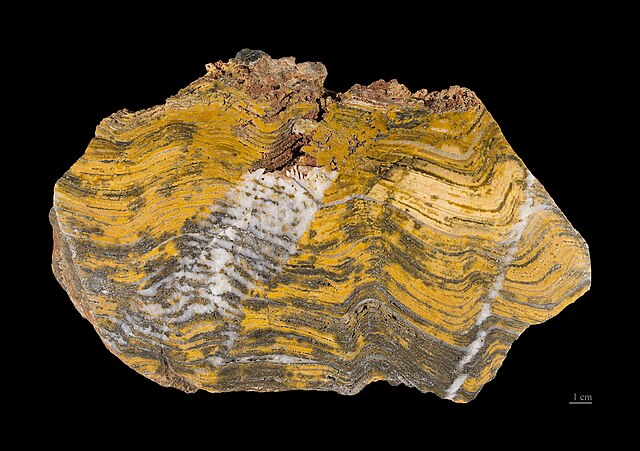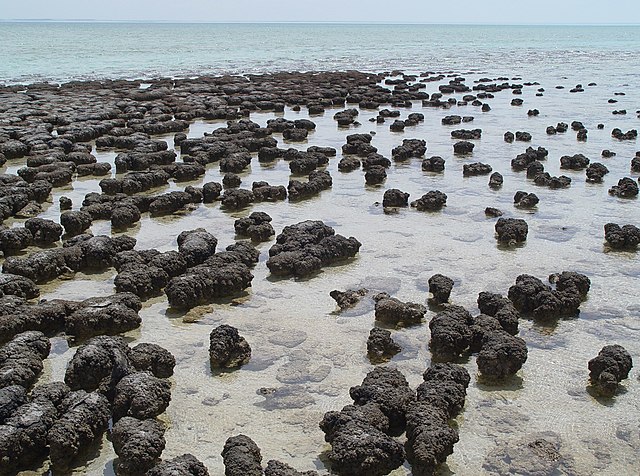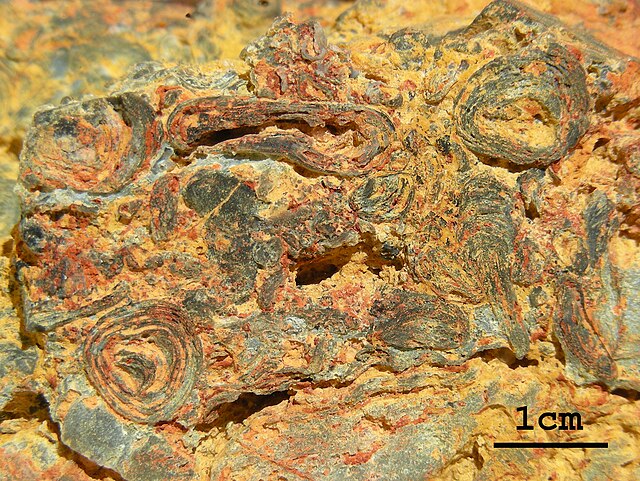Ojos de Mar is a group of 3–6 small water bodies close to the town of Tolar Grande in Argentina and an important tourist attraction there. They are inhabited by extremophile microorganisms of interest to biotechnology; stromatolites have also been found there.
Ojos de Mar. Aracar mountain rises in the background.
Ojos de Mar. Aracar volcano rises in the background
A smaller pond
The water surface of Ojo de Mar below the sunny sky
Stromatolites or stromatoliths are layered sedimentary formations (microbialite) that are created mainly by photosynthetic microorganisms such as cyanobacteria, sulfate-reducing bacteria, and Pseudomonadota. These microorganisms produce adhesive compounds that cement sand and other rocky materials to form mineral "microbial mats". In turn, these mats build up layer by layer, growing gradually over time.
Fossilized stromatolite in Strelley Pool chert, about 3.4 billion years old, from Pilbara Craton, Western Australia
Modern stromatolites in Shark Bay, Western Australia
Paleoproterozoic oncoids from the Franceville Basin, Gabon, Central Africa. Oncoids are unfixed stromatolites ranging in size from a few millimeters to a few centimeters
Fossilized stromatolites, about 425 million years old, in the Soeginina Beds (Paadla Formation, Ludlow, Silurian) near Kübassaare, Estonia








